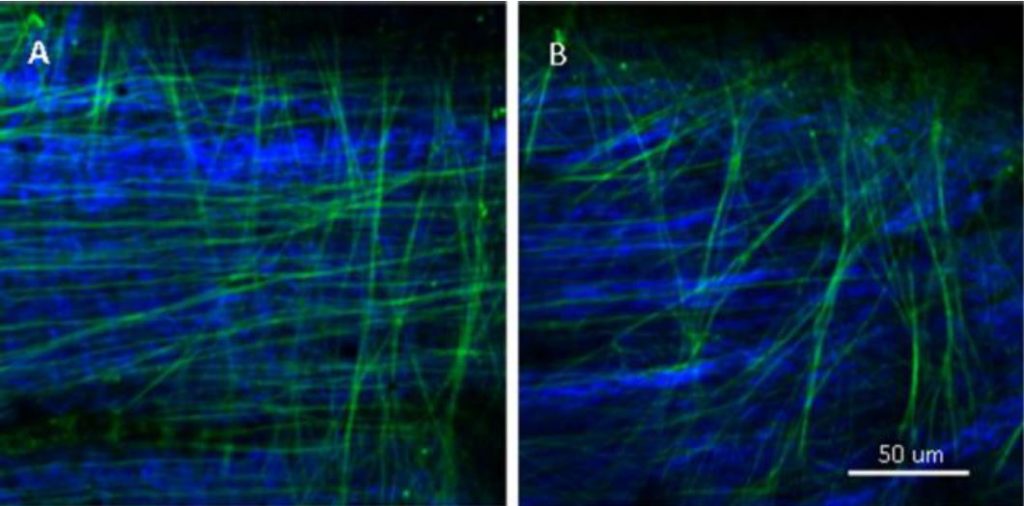A project one of our technical staff, Ellen Green, is involved in.
This project focuses on chordae tendineae, the cord-like structures forming an integral part of the mitral valve complex of the heart, which is responsible for controlling blood flow from the left atrium to the left ventricle. Chordae are vital in ensuring complete closure of the valves and are involved in a number of diseases, such as regurgitation and ruptured chordae. There are approximately 10-12 chordae in the mitral valve, classified according to their size and insertion points. Chordae are tethered to the valve leaflet at one end and papillary muscles at the other. An important role of chordae is to control the opening and closing of the valves as the heart contracts, which requires both a high degree of elasticity and strength, provided by the connective tissue proteins elastin and collagen respectively, allowing them to withstand large repeated forces. The relationships between structure of the chordae, their mechanical properties and how they change in disease is still unclear, limiting the approaches to reconstructive surgery and development of artificial chordae. This study uses a combination of non-linear microscopy and mechanical testing to investigate further the material properties and microstructure of the chordae simultaneously, with a view optimising the material properties of replacement chordae for a fully functional mitral valve complex. Figure 1 below shows non-linear images of a porcine strut chordae tentineae at a) 5% strain and b) 40% strain, where the rearrangement of collagen fibres (blue) and elastin fibres (green) under strain is clear.

